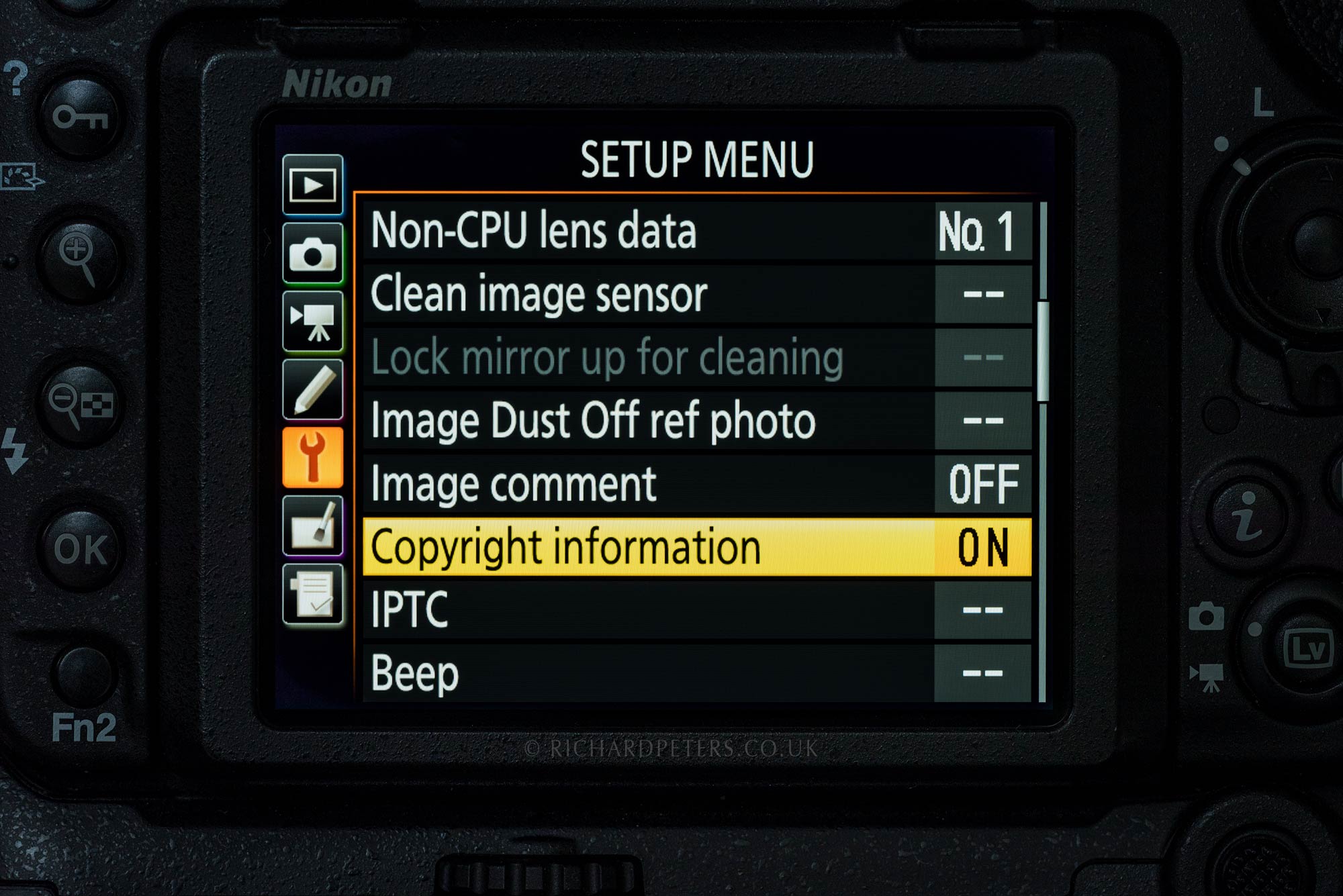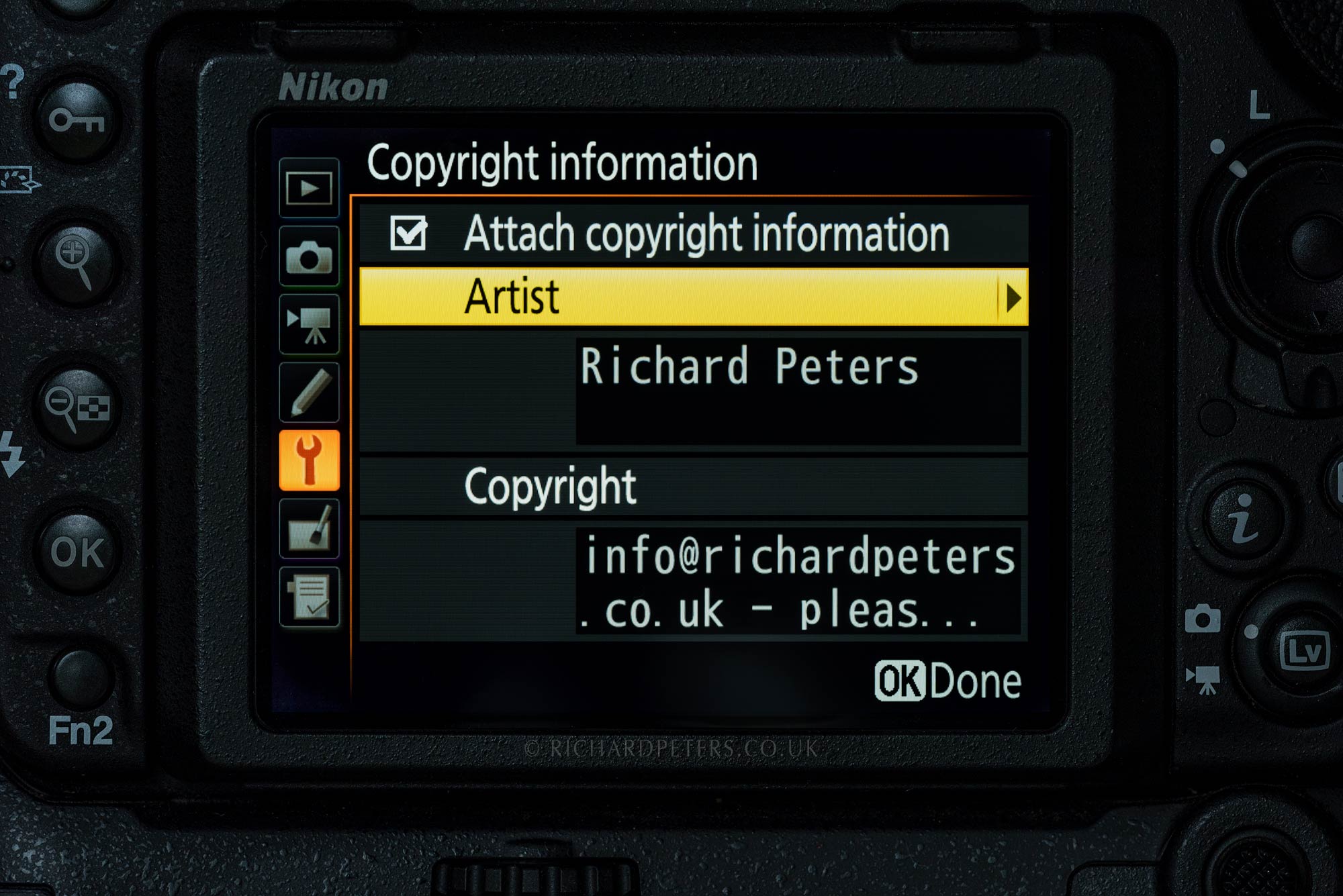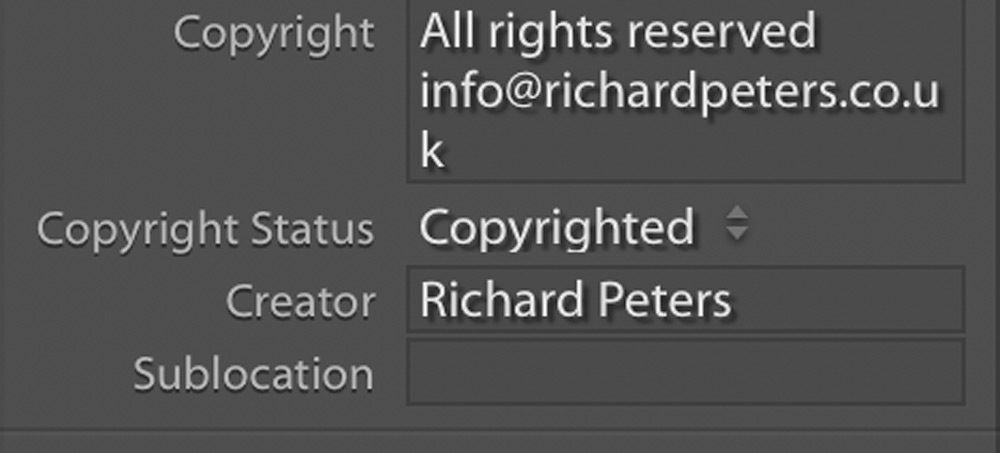A very quick tip for any newer photographers out there (I assume many seasoned photographers will know this already), is to add copyright information in camera. This will then write that information to the photos exif data, alongside camera and lens settings. This means every photo you take comes straight out the camera with a clear indication of who took the shot. With images being thrown around the web via forums and social media, it’s always a good idea to have something embedded that can lead back to you.
Follow these steps to add copyright information to your photos
The method for adding this information varies depending on your brand of camera. However, if you shoot with any of the more recent Nikon DSLRs you can follow the steps below.
- Go to the Setup Menu.
- Turn on and enter the Copyright Information area.

In here you can set both the Artist and add Copyright.
- Set the artist as your name.
- Set the copyright information to contain your email address and copyright notice.
- Click the Attach copyright information check box.

If you have one of the newer DSLR’s such as the D5 or D500, the touchscreen make inputting your details a lot quicker and easier, otherwise there can be a lot of scrolling back and forth. It’s worth the effort though so don’t be put off.
Once you have done that, the information will show up in the exif details in your favourite editing software, as shown below with Lightroom.

Further reading: Nikon DSLR error codes, what do they mean?
What are the benefits of adding copyright information to the exif?
- It adds an element of security.
It’s very easy to share your images online such as on websites, forums and social media. The downside to this is that it’s also easy for someone to take your images and use them for their own gain, cropping out watermarks etc or even entering them in to competitions pretending they own the image. That might seem extreme, but it does happen. Being able to trace the image back to you is always a good thing. - Make it easier for potential buyers to find you.
It might be small but there is always a chance that one day someone will stumble on one of your images on a website somewhere, and want to contact the photographer who took it. Well, having your info embedded in the image increases the chances of them tracking you down. It might be a long shot but if, over the years, you end up with thousands of images floating around online, doesn’t it make sense to do everything you can to make it easier for you to be found?
[clickToTweet tweet=”Adding copyright info to your camera and photo exif is simple and essential, here’s how…” quote=”Adding copyright info to your camera and photo exif is simple and essential, here’s how…”]
- It speeds up your workflow.
Less of an advantage but still something to consider. The less time you have to spend sorting and editing images the better. If you send images to a photo library, key wording can be a pain. Having one less thing to add to your images will speed up, and therefore reduce, your workflow time. Even if you don’t send images to a photo library yet, you might do one day. And it’s much better to have thousands of images already copyrighted sitting in your collection now than having to add it to all of them later.
Should you really bother, it’s not fool proof?
Of course as with anything in the digital world, nothing is full proof and there are ways of removing copyrights or any other information if someone really wants to. But, I absolutely recommend setting this up in your camera. Anything that can help someone identify your images and find you, the better.
So, if your camera offers the ability, fill out your copyright details so that every shot you take from now on comes straight out the camera with your name on it. After all, it doesn’t hurt or cost anything and you certainly won’t be losing out by doing it, but you absolutely might gain from it in the future!
Want to learn more?
Get more information to help you take better photos in my shooting tips and advice archives.








